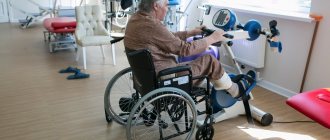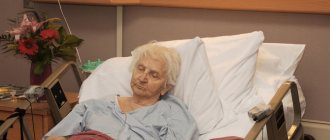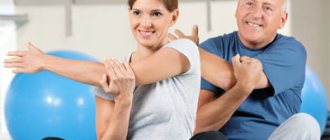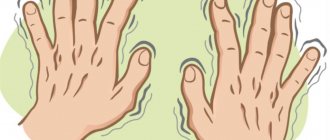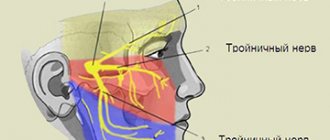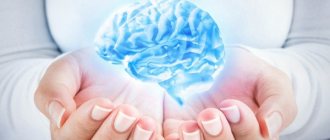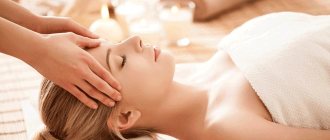Rehabilitation after a stroke at home in Krasnodar and the Krasnodar region will help a person restore all lost skills. But it is necessary that the entire process be carried out under the supervision of qualified specialists using a personal approach. The brain is an extremely important human organ, so in case of any disease it is necessary to take timely measures. Otherwise, this will lead to risks of deterioration in the performance of the entire body.
During the development of the disease, any part of the brain or several at once is affected. And this leads to loss of speech, cognitive, motor functions or a number of others.
A well-designed and compiled rehabilitation program at home helps to cope with all the negative consequences and restore lost functions. It is necessary to be in constant contact with specialists, strictly follow their recommendations, take care of the patient, and provide all possible support and assistance.
And also be sure to evaluate all possible risks and understand whether it is possible to opt for rehabilitation in an inpatient boarding house under round-the-clock supervision of doctors. In Krasnodar and the Krasnodar Territory, such a reliable option is the private boarding house for the elderly “Harmony”.
Possible negative consequences of cerebrovascular accident
Apoplexy is one of the most severe and dangerous types of cerebrovascular insufficiency, in which the optimal amount of blood ceases to flow into the human brain.
As a result, oxygen ceases to flow into organs and systems, which leads to oxygen starvation and various neurological disorders. The initial sign of the onset of the disease is thrombosis, rupture of blood vessels due to vascular insufficiency. The most common negative consequences of such an apoplexy are lack of oxygen, death of neuronal brain cells, and internal hemorrhage.
The attack itself lasts a day or more. And during its onset, the patient must be urgently taken to the hospital, where he will be under the supervision of a team of qualified doctors. It is the timely call of an ambulance, the help of doctors and subsequent rehabilitation that is extremely necessary, since the process of death of brain cells is extremely dangerous and continues even after the main symptoms of pain have already passed.
What is the danger of having an attack?
- Partial or complete loss of physical activity, as the command to the limbs is given by the affected brain.
- Mental disorder, loss of speech and cognitive abilities.
- Memory loss, temporary or complete amnesia.
- Impaired coordination of movements and fine motor skills.
- Complete or partial loss of vision.
- decreased immunity, infectious diseases, etc.
In each specific case, such dangerous consequences manifest themselves to a more or less pronounced degree, while some are absent. This depends on focal or complete brain damage, which directly affects the possibility and duration of recovery.
Causes
Major stroke has several risk factors:
- Atherosclerosis. Reducing the lumen of the arteries due to cholesterol deposits disrupts the process of blood circulation in the tissues of the brain. This provokes the development of ischemia;
- Hereditary predisposition. If one of the relatives had a history of an episode of cerebrovascular accident, then subsequent generations are at risk;
- Taking certain medications. Oral contraceptives and other drugs thicken the blood, increasing the risk of spontaneous thrombosis;
- Arterial hypertension. High blood pressure has a strong impact on the vascular wall. As a result, arteries rupture with subsequent hemorrhage into the brain cavity;
- Frequent transient ischemic attacks;
- Diabetes mellitus complicated by cerebral vascular angiopathy;
- Asymptomatic carotid artery stenosis;
- Smoking and alcohol abuse;
- Drug use;
- Metabolic syndrome;
- Excess weight (more than 30% of normal).
The chances of surviving a major stroke depend on whether treatment for the disease is started within 3-4 hours of the onset of the first symptoms. Finding out the causes of major stroke is necessary to develop the most effective treatment regimen. In addition, eliminating provoking factors will reduce the risk of developing a recurrent cerebrovascular accident.
A major stroke is one of the most dangerous pathologies that occurs due to circulatory problems in several areas of the brain at once. As a result, the patient develops a number of complex pathological abnormalities, in some cases incompatible with life.
The most dangerous type is considered to be hemorrhagic stroke. In this case, problems arise with blood circulation in the brain, leading to hemorrhages. Blood entering the cranial cavity causes swelling of the surrounding tissues, as a result of which vital functions are disrupted. Ischemic stroke has favorable prospects. It is expressed in a short-term disruption of vascular conductivity, which, with proper therapy and care, is eliminated over a certain period of time.
The symptoms of a major stroke are characteristic: the patient loses coordination, inadequately perceives reality and the speech of others, completely or partially loses the ability to reproduce words and arrange them in logical chains. The main symptom is a severe headache.
If any of these manifestations occur, you should immediately consult a doctor. The sooner measures are taken, the greater the chances of recovery, and in some cases, life. The consequences of a major stroke are truly dangerous; most patients cannot fully recover their health for the rest of their lives. At the Yusupov Hospital, the examination takes minimal time, and a comprehensive treatment plan is prescribed in accordance with the type of extensive stroke and the extent of brain damage.
Make an appointment
How long does rehabilitation after a stroke last at home in Krasnodar?
The exact recovery time varies from person to person and depends on the following factors:
- State of human health, existing diseases, characteristics of the body.
- The patient's age. With the advent of old age, it becomes much more difficult to restore the body.
- The intensity of the symptoms, the affected areas of the brain and what kind of attack the patient had.
On average, according to statistics, recovery from a primary stroke takes from 3 months to six months, depending on the complexity of the situation. In more complex cases, therapy using specialized methods and technologies can last up to 8 months.
After a secondary attack, the patient recovers for a whole year, the likelihood of a full return of all lost functions is reduced, some of them will remain with the patient. And with the third and subsequent strokes, the likelihood of falling into a coma or death increases significantly.
Signs of a stroke
Symptoms of a stroke, in which it is vital to immediately call an ambulance, are:
- sudden weakness and/or numbness of the muscles of the face and/or limbs - usually on one side of the body;
- difficulty speaking;
- a sharp decrease in vision (in one or both eyes);
- throbbing headache, dizziness;
- causeless loss of coordination of movements.
It is important to remember: the more quickly medical care is provided for a stroke, the higher the chances of keeping as many brain neurons alive as possible, and often the patient’s life. The most effective time for emergency treatment is 3-6 hours from the first manifestation of the disease. After this period, changes in the affected areas of the brain may become irreversible, and rehabilitation measures after a stroke may become virtually useless.
When to start recovery after ischemic stroke injury
With such an illness, the patient must immediately go to the hospital to receive professional emergency care, followed by reliable treatment and elimination of the root causes of its manifestation.
The average hospital stay is 2-3 weeks if there are no complications. This period is enough to collect all the tests, identify the characteristics of the situation and drug treatment. But it is recommended to start professional rehabilitation from the first day after an apoplexy strike while still in the hospital under the supervision of doctors . This way you will restore lost speech, memory, etc. as reliably as possible.
Remember, the faster you begin to normalize your condition, the higher the likelihood of obtaining the most favorable prognosis for recovery, and the risk of relapse of an attack will also be reduced. It also allows you to more reliably and safely cope with various secondary diseases that appear after an attack.
General rules of care
The recovery period after a stroke is divided into early (up to 6 months), late (6-12 months) and residual effects (after 1 year). Ideally, in the early recovery period, the patient is recommended to be treated in palliative hospitals, sanatoriums, in the late recovery period and during the period of residual effects - in a day hospital, rehabilitation department, or by a visiting team at home. In reality, most often patients are at home after an acute period of stroke, and the main question that arises among their loved ones is where to begin rehabilitation. One of the main tasks of the rehabilitation process is to create comfortable conditions that promote relief and speedy recovery.
Preparing the premises
To exclude the impact of external traumatic factors (light, sound, temperature stimuli) on the patient’s psyche, he should be placed in a bright, well-ventilated room, where no extraneous noise can be heard from the street. The room should maintain a comfortable temperature within +18-22 °C.
The room should not be cluttered with furniture or objects that are easily moved out of place. A good alternative to a regular bed would be a functional one - with adjustable height and backrest position, side rails, and lockable wheels. Near the bed you need to place a bedside table with hygiene items, a blood pressure monitor, other necessary things, a wheelchair or other mobility aids (walkers, canes), a portable toilet or a bedpan.
If the person caring for the patient is not always with him, you can equip the room with a call button that the patient can easily reach, or replace it with a regular bell. Patients who can move independently or are beginning to train the skill of walking will find handrails along the walls very useful, and anti-slip mats in the bathroom will prevent injuries.
Body hygiene and bedsore prevention
Adequate prevention of bedsores can prevent their occurrence in 80% of cases.
Preventive measures:
- a special anti-bedsore or foam mattress with a thickness of at least 10 cm;
- soft bed linen without wrinkles;
- special cushions or pads made of foam rubber for vulnerable parts of the body (back of the head, shoulder blades, elbows, sacrum, heels, ankles);
- changing body position every 2-3 hours;
- comfortable underwear;
- prevention of skin trauma - carefully moving or turning over the patient.
It is important to carry out proper hygiene measures and skin care. At least once a day, during hygienic procedures, you should examine the entire surface of the patient’s body, vulnerable areas - every time you turn over. You should use waterproof diapers and diapers and change them as needed. It is necessary to wash the patient with warm water without soap after each bowel movement, washing with soap - no more than once a day, it is better to use liquid soap. After washing, the skin is thoroughly dried with a soft towel. For dry skin, moisturizing and nourishing creams are used; for diaper rash, powders without talc are used.
Nutrition
Food should be comfortable to swallow and easily digestible. The patient needs a sufficient amount of fluid - at least 1.5 liters. in the absence of restrictions. Drinking should not be limited even with urinary incontinence, since with a lack of fluid, urine becomes concentrated and irritates the skin.
The patient's diet should contain a sufficient amount of protein. It can be a soufflé, minced chicken, beef, rabbit, or fish. Patients who have difficulty chewing or swallowing semi-solid foods may be given meat or fish broth.
The menu should include dishes rich in vitamin C, iron, zinc, fermented milk products, fruits and vegetables.
Food is prepared boiled or baked and must be freshly prepared. You should not eat fried foods, pickles, smoked foods, spicy foods, canned food, fast food, carbonated and sweet drinks. You need to eat 4-5 times a day, in small portions.
Main types of stroke
First of all, understand what type of apoplexy the patient has and the further process of recovery depends on this. Thus, the ischemic variant has a more superficial nature of vascular damage and the rehabilitation period will be shorter. But with the hemorrhagic type, the rehabilitation period is longer, but the negative consequences are the least pronounced.
To do this, it is important to identify the main stages of a stroke attack:
- The most acute is the beginning of the blow itself with damage to the nerve endings. Lasts from several hours to a day.
- Acute - occurs in the first minutes after a disruption of nerve connections has already occurred with a pronounced manifestation of dangerous symptoms.
- Subacute. At this stage, specialists have already helped to cope with the attack, prevented the development of death, and stabilized the person’s condition. On average, this stage lasts 3 days and requires mandatory round-the-clock supervision by doctors, reliable care, and following all the prescriptions of specialists to prevent the recurrence of the stroke.
Then a rehabilitation program is carried out, which is divided into early and late . Early occurs within the first few weeks of the client's hospital stay. And late rehabilitation after a stroke at home in Krasnodar is carried out after discharge . It is important to analyze in more detail the features of rehabilitation in specific areas and identify their features.
Boarding house with a medical bias "Spring" - help after a stroke
After suffering a stroke, a person experiences severe disturbances:
- partial paralysis, which complicates movement and some human functions;
- the correctness and reflexes of swallowing movements and the implementation of swallowing are lost;
- hearing ability is impaired, vision decreases;
- speech is completely or partially absent;
- periodic severe headaches occur;
- memory loss occurs, as in dementia;
- the logical chain of movements and behavior is completely disrupted.
At the same time, the sick person is not able to provide himself with the necessary help and loses the ability to control the release of urine and feces. Such people need round-the-clock care in special medical institutions. The Vesna boarding house will be able to take care of such wards and provide them with comfortable accommodation and proper rehabilitation, which will return the victim the ability to speak and provide services to himself.
In the boarding house "Vesna", a course of recovery from the pathologies of stroke and many other diseases has been completely created. Specialists and employees of the patronage service will provide the patient with all the necessary assistance and help relearn all the necessary self-care techniques for a healthy person. Having created the conditions for complete recovery, the patient in small steps will regain the ability to live without outside help.
What methods are used in stroke rehabilitation?
All experienced doctors unanimously advise and recommend that after a stroke attack, send the patient for rehabilitation to a specialized institution, where the person will receive round-the-clock professional assistance and restore the basic important functions of the body.
The main goal of rehabilitation measures is to restore speech ability and motor compulsory functions of a person, to return the psycho-emotional role of the body to a normal state. For this purpose, gymnastics specially developed by our specialists are used, acupressure physiotherapy, massage procedures and many other measures are carried out depending on the patient’s condition.
When conducting and providing assistance, each patient is treated with his own individual approach, which eliminates unnecessary procedures and certain negative factors from treatment and restoration of the person’s condition.
Depending on the patient’s condition and the severity of the attack, rehabilitation does not have a specific time frame. It all depends on the individual capabilities of the sick person’s body. Basically, during recovery, the time limit for seeking help plays a significant role, which can be carried out up to 72 hours, which will fully guarantee the return of a sick person to normal life.
Providing assistance and conducting rehabilitation, the boarding house provides a gradual and step-by-step restoration of the human body:
- First stage. For this stage, breathing exercises, assistance with hygiene measures, and preventive actions aimed at preventing the occurrence of bedsores and the development of an inflammatory process in the lungs during stagnation are provided.
- Second phase. This type of rehabilitation begins after the patient begins to regain his ability to move. At the same time, therapeutic exercises continue, targeted physiotherapeutic procedures are carried out, and classes are conducted to restore memory and some functions of the human brain.
- Third stage. At this stage, the patient begins to independently perform special gymnastic exercises, learn to be independent and perform hygienic procedures himself, and again begins to eat food without the help of others.
To carry out these rehabilitation measures, patronage nurses are needed who have extensive experience working with people who have suffered this stroke. This significantly speeds up the process of recovery of the human body and leads to remarkable results in the recovery of the sick person under his care.
Patronage during rehabilitation of stroke condition
Constant monitoring of the patient provides the opportunity for timely assistance and speeds up the process of recovery of the damaged body. At the same time, nursing sisters have their own responsibilities:
- ensuring round-the-clock monitoring of the sick person’s condition;
- organization of morning and evening rounds of attending physicians with an entry in the health log;
- assistance in walking around the boarding house;
- maintaining order and quality nutrition for the patient;
- timely administration of medications;
- daily recording of data on blood pressure, body temperature, height, weight, monitoring the dynamics of recovery of the human body;
- preventive daily measures to counteract the occurrence of bedsores;
- control over the quality of nutrition, according to the prescribed standards of a nutritionist;
- creating new hobbies for the patient;
- reading fiction for the patient;
- assistance with hygiene measures and certain procedures.
Only a professional approach to healing and restoring a patient can restore a person’s former strength after a stroke.
What is the prognosis for recovery?
A prognosis for recovery can only be made after the first stage of rehabilitation has been completed. It largely depends on the quality of service and the individual capabilities of each organism. Since the Vesna boarding house has everything necessary to carry out these rehabilitation measures, the prognosis significantly increases the chances of a complete or maximum partial recovery of the ward.
Comfortable accommodation, high-quality food, timely administration of medications, provision of specialized professional assistance to the patient - this is all that will help a person regain lost abilities due to a stroke. Our boarding house “Vesna” is fully prepared for these events and provides a huge percentage of recovery after suffering problems of the human brain.
Service for wards complies with European standards of treatment and rehabilitation. All services and assistance provided are carried out with skill, which makes it possible to speed up the patient’s recovery process. What helps in this situation is an individual approach and treatment, which not all boarding houses and clinics practice in these activities.
Coziness and comfort, beautiful places for walks, a fenced area with round-the-clock surveillance, creates the right and healthy conditions for the patient. Leaving him to us for rehabilitation and care, you can start thinking about your work and have the opportunity to go on a business trip. We will take care of your relative and restore the lost ability to live independently.
Restoration of motor functions
Often, after suffering an apoplexy, the patient loses his previous motor activity in full or in part. For example, hand motor skills suffer, movement coordination is impaired, and limbs do not move. Doctors also strongly recommend that you strictly adhere to bed rest for the first time and not get up, even if you have the strength to do so. The best option would be to sit on a special bed or use pillows to warm up your arms and legs.
It is useful to use therapeutic massage , which can only be performed by a qualified master. It can be general and complex in nature or affect a specific muscle group. It is also important to develop muscles, which will be an excellent barrier to the appearance of spasms and pain. If the client is unable to move parts of the body, then a passive version of gymnastics is used.
It is important to understand that physical therapy, massage sessions and feasible physical activity alone will not be enough to restore lost motor activity. It is important, along with them, to use professional equipment. For example, by applying current pulses, it is possible to stimulate the affected areas and bring them back into active tone.
Baths and applications are also used as additional measures to improve blood circulation. The doctor may prescribe medications to relax muscles, eliminate pain and spasms. Pay special attention to the person’s face and facial expressions. In case of pinched nerves or paralysis, facial expressions change noticeably. You can cope with its restoration with the help of simple exercises. You should do gymnastics for your eyes and mouth, make a wide smile, pronounce various sounds, squint your eyes tightly and relax your eyelids.
Why don’t people want to recover after a stroke?
The success of rehabilitation depends on the patient’s mood. People who have had a stroke may seem indifferent to their health. Very often they become irritable, aggressive, and whiny. They follow the doctor’s recommendations without much desire and prefer to lie down and watch TV. But with this approach there is no hope for a quick recovery. Relatives and friends need to muster all their will in order to successfully overcome the consequences of the disease. For some, it is enough to understand that the patient’s whims are not the result of laziness or bad character, but a consequence of damage to certain areas of the brain. Therefore, the primary task of loved ones is to help patients overcome their reluctance to exercise.
The rehabilitation period can last a long time, so both the patient and his family need to be patient. The effectiveness of the procedures depends on their systematicity and high-quality implementation.
Restoring vision, eyes after stroke
Often, apoplexy affects individual vessels that supply the eyeball with everything necessary. This may lead to the following:
- Complete or partial loss of vision.
- Inability to open and close the eyelid.
- Problems moving the eyes up and down and to the sides.
- The appearance of presbyopia is a change in focus and the pensioner cannot distinguish small objects at a short distance.
A professional and experienced ophthalmologist will help you cope with such deviations. It is important to start treatment at the initial stages, carry out complex therapeutic exercises for the eyes, and take medications to relax muscles .
In some cases, surgical intervention is necessary to fully or partially restore visual acuity.
Return of lost speech skills
Initially, when a client loses speech, it is important to speak in principle. And after that, specialists will help you work on your diction. First of all, a neuropsychologist works with the patient, helps to identify the problem and finds ways to resolve it. But you should be prepared for the fact that complete recovery may take several years. And all this time, the patient should be observed by a specialist and perform all the necessary exercises at home. It is extremely important to stimulate the speech apparatus with various exercises, both externally and internally.
You need to start the learning process again from simple to complex. If you are unable to restore the muscles of the pharynx and larynx with the help of specialized exercises and massage, then you can use electrical stimulation using professional equipment.
Rehabilitation options under the compulsory medical insurance policy (free)
There are two options for how to get into rehabilitation under the policy.
- First option. Transfer from hospital directly to a rehabilitation center or rehabilitation department.
- Second option. Enroll in the rehabilitation treatment department as planned - in the direction of the clinic and undergo treatment in the order of priority.
Both options work, regardless of the region - even in Moscow or the region, in Chelyabinsk or Nizhny Novgorod. In any subject of the Russian Federation, recovery from the consequences of a stroke after discharge from the hospital takes place in similar ways.
Restoring cognitive functions after stroke
Such important functions include speech recognition, memorizing information, logical thinking, concentration on something and, in general, human intellectual abilities. The less these important abilities are developed, the worse the general condition and well-being, the quality of a person’s life deteriorates and his life expectancy is reduced.
In older people, this can manifest itself as dementia, the causes of which are as follows:
- Severe bleeding in the brain.
- Affects a large volume on two hemispheres at once.
- 2 or more attacks occur immediately in succession.
- Impairments in those areas where cognitive skills are important for performance.
Characteristic symptoms do not always appear immediately and equally. Memory can deteriorate gradually, a person becomes inattentive, absent-minded, and soon memory lapses appear. This happens because there is a protracted process of degeneration and neural connections are gradually destroyed. The process is also intensified due to tissue ischemia and hypertension.
Patients are treated by a qualified neuropsychologist and occupational therapist, and it is also extremely important to work independently and perform exercises to remember information. Sometimes play therapy is used in the form of board games, crosswords and other things. Additionally, a course of medications can be used to stimulate brain activity.
Nutrition and swallowing rehabilitation
We recommend
“Centers for pensioners: what they are and how to get there” Read more
Sometimes, as a result of an attack, people can feel the taste and amount of food in only one half of the mouth. An elderly patient will have to relearn how to chew and swallow. There is a special set of exercises to restore the swallowing reflex:
- Imitation of swallowing movements.
- Imitation of yawning, while it is important to open your mouth as wide as possible.
- Gargling with plain water.
- Imitation of cough.
- Puff out your cheeks and hold your breath in this position for a few seconds.
- Pronouncing the sound “i” and tapping the larynx at this time.
During rehabilitation after a stroke, staff and loved ones of the patient must comply with basic nutritional requirements. Damage after illness can also affect the body's ability to take in and digest food. Therefore, it is important to provide the victim with proper nutrition and feed him independently. The elderly patient himself will not be able to even bring food to his mouth, and sometimes this can be very dangerous.
Food can only be served from the working side; its consistency must be soft!
Make sure the older person has time to chew and swallow a portion before giving him another.
Check the temperature of the food, do not give too hot or cold food, this can lead to spasms and cramps of the esophagus.
The main thing in the diet of an elderly person who has suffered a stroke is to follow a diet, the principles of which are to exclude or consume very small amounts of animal fat and salt.
Partial abstinence from animal fats helps lower cholesterol in the blood, and this will help avoid a recurrent attack. Reducing the amount of salt consumed normalizes blood pressure. When it is normal, the restoration of body functions after a hemorrhage is more effective and faster, and further damage to brain neurons is prevented. Another important effect of proper nutrition is weight loss.
We recommend
“A set of exercises for older people: body and breathing” Read more
How can you speed up rehabilitation after a stroke?
First of all, you should understand that rehabilitation after a stroke at home is carried out in Krasnodar and the Krasnodar region. But a much more effective and efficient option would be to place a person in the sanatorium conditions of a specialized boarding house. A worthy option in Krasnodar for accommodating an elderly person after an apoplexy with the provision of reliable care is the private boarding house for the elderly “Harmony”.
Qualified staff of a private boarding house have the appropriate education and are ready to provide reliable and safe care for an elderly person, which has a positive effect on the pensioner’s well-being and contributes to his recovery. And also an important element of staying in a hospital for recovery is healthy and dietary nutrition, prepared by qualified specialists to get rid of the negative consequences of apoplexy.
Rehabilitation after a stroke in Krasnodar at home can be carried out in mandatory contact with qualified specialists. But in this case it will take longer. If you need to get rid of negative consequences, recover in the shortest possible time, efficiently and effectively, then the best solution would be to choose our private boarding house “Harmony”.
Rules for bed rest after a stroke in an elderly person
After an attack, a person is hospitalized, so it is important to familiarize yourself with the definition of bed rest. It doesn’t matter at all with what severity of stroke the elderly person was admitted to the hospital - in the first few weeks, and sometimes even months, it is extremely important to lie down more time and reduce any bodily movements to a minimum.
After an ischemic stroke, the most common, unilateral damage is possible, in particular paralysis. The main thing is not to panic and convince the victim that with a reasonable approach to the problem and proper treatment, the lost functions will quickly be restored.
Hospital treatment and rehabilitation after a stroke in an elderly person implies compliance with important rules:
- Under no circumstances should the patient remain in one position for a long time; this is dangerous due to the appearance of bedsores, which will greatly complicate rehabilitation.
- It is necessary to turn the patient over regularly; experts recommend doing this approximately once every two to three hours.
- To restore motor skills and complete recovery, it is important to do therapeutic exercises.
- It is necessary to maintain correct body position.
Please note that an elderly patient will spend a long time in a supine position. Therefore, it is important to provide him with comfortable conditions for the shoulder joints, so that their mobility is preserved. Otherwise, soon the soft tissues and joints will begin to numb, and the elderly person will experience pain in these areas.
In a supine position, the injured arm should be at an elevated level. It is best to use a pillow or cushion for this. You can achieve the maximum effect by placing a small salt bag weighing up to 500 grams. The visible result from the above manipulations should be as follows:
- An elderly patient's arm does not bend at the elbow.
- Keeping your fingers aligned is especially important.
- The distance between the torso and shoulder should be the same and unchanged.
Pay attention to the rules of leg position during primary rehabilitation after a stroke in an elderly person:
- A special cushion should be placed under the legs of an elderly patient. This way you will achieve the desired elevation angle of 15–20 degrees, necessary for proper blood supply.
- There are also special foot rests. When using such a device, you need to check that it is in the neutral position.
Important note: for the patient to be in the correct position, both legs - both the injured and the healthy ones - must lie equally.
Following these rules is vital for proper rehabilitation after a stroke in an elderly person.
If the patient is lying on his side, other recommendations must be followed. Due to the fact that after hemorrhage only one side is paralyzed, the victim must lie in two positions - on the healthy side and on the sick one.
If an elderly patient is lying on the healthy side, place a support under the limbs and a pillow under the sore side. Pre-bend the non-working joints.
If an elderly patient is lying on the paralyzed side, you need to tilt his head down, but not too much. The paralyzed arm must be straightened and the palm placed on the body. In this position, the injured arm should be bent at a right angle, and the healthy arm should be pulled back.
We recommend
“Examination of an elderly person - which doctors should be seen regularly” Read more
